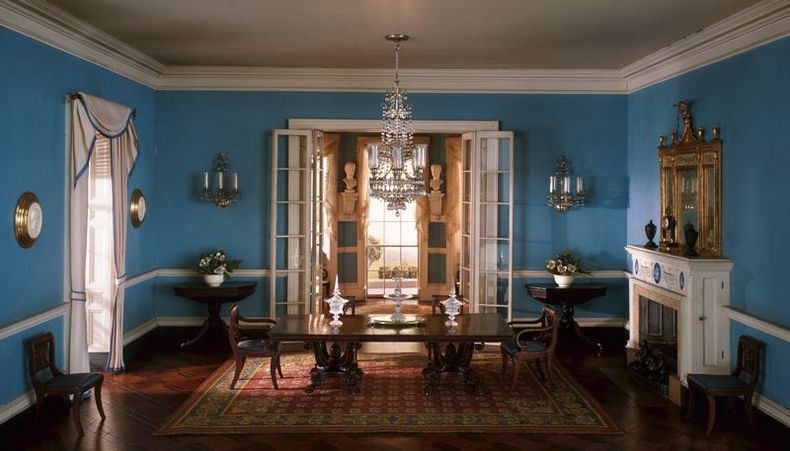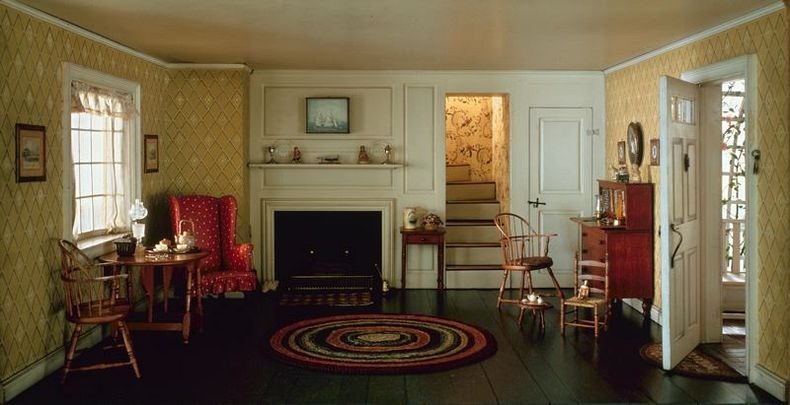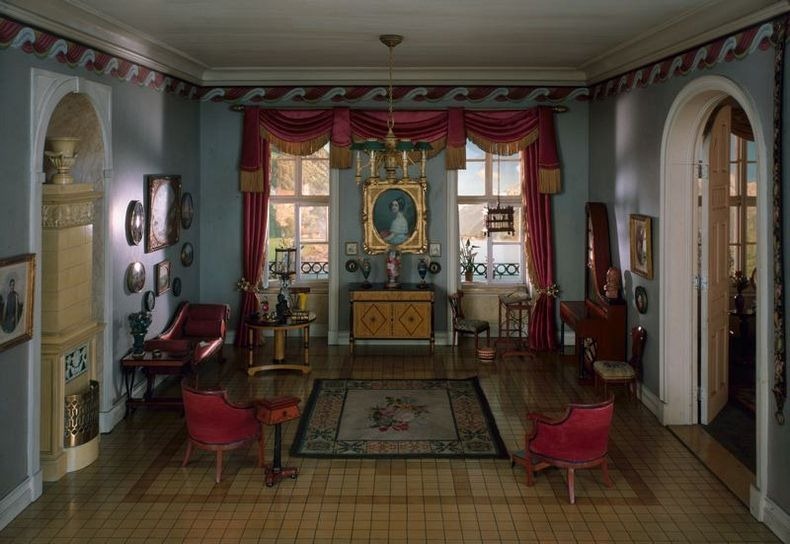In a special wing at the Art Institute of Chicago, and in the Phoenix Art Museum, are several exhibits of incredibly detailed miniature rooms. Painstakingly constructed on a scale of one inch to one foot, these rooms faithfully depict the architecture and interior design of actual rooms found in the United States, Asia and Europe during the late 13th century to the early 20th century. The rooms were conceived, designed, and in large part created by Narcissa Niblack Thorne (1882-1966). An Indiana native, Thorne began to collect miniature furniture and household accessories during her travels to Europe and the Far East. Impressed with the period rooms she encountered in major museums, beginning in 1930, Thorne began commissioning master craftsmen and artisans to build interiors to hold her growing collection of miniature objects. Many of the rooms even contain period-style rugs Thorne had woven specifically for each space.

Model of a Virginia Dining Room, c. 1800
Thorne's best-known works show the interiors of upper-class homes from England, the United States, and France. They are painstakingly precise, and when maintenance is required, it has to be done with delicate tweezers and cotton swabs, the furnishings being carefully restored to their original position with reference to a detailed layout plan.
Although her rooms were extremely time-consuming and expensive to produce, Thorne never sought or received payment for any of them. The death of her husband in 1946 left Thorne with an estate worth upwards of 2 million dollars, enabling her to continue focusing on her work. However, eventually a shortage of sufficiently skilled workers forced her to focus on dioramas and shadowboxes.
When a permanent gallery was established for the Thorne rooms at the Art Institute in 1954, Thorne set up a fund to cover the costs of caring for the works. But poor health forced her to close her studio in March 1966, donating her remaining works to charity. Narcissa Niblack Thorne died the same year in Chicago.
Most of Thorne's works can be seen at The Art Institute of Chicago that holds 68 Thorne rooms, which originally occupied a dedicated wing but are now housed in a large room in the building's lower level. In total, Thorne completed nearly one hundred rooms. Twenty of the original thirty were given to the fledgling Phoenix Art Museum in 1962, and have been on view here ever since. Other examples can be found at the the Knoxville Museum of Art, the Indianapolis Children's Museum, the Kay Miniature Museum of Los Angeles, and the Victoria and Albert Museum in London, England.
New Mexico Dining Room, c. 1940
Tennessee Entrance Hall, 1835
Virginia Kitchen, 18th Century
Virginia Drawing Room, 1754
Maryland Dining Room, 1770-74
Shaker Living Room, c. 1800
New York Parlor, 1850-70
Pennsylvania Drawing Room, 1834-36
New England Bedroom, 1750-1850

Cape Cod Living Room, 1750-1850
Rhode Island Parlor, c. 1820
Massachusetts Dining Room, 1795

German Sitting Room of the "Biedermeier" Period, 1815-50
French Boudoir of the Louis XV Period, 1740-60
English Great Room of the Late Tudor Period, 1550-1603
Source: Wikipedia, Joe Orman, Art Institute of Chicago

























Comments
Post a Comment